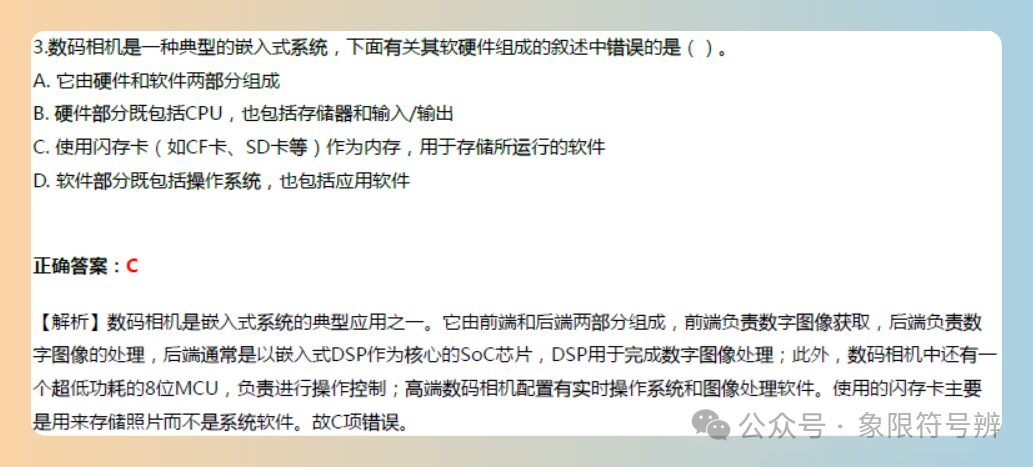Key Knowledge Points in Chapter One:
Understand the characteristics, classification, development, and application of embedded systems, and be familiar with the logical components of embedded systems.
Understand the main types of embedded processing chips, be familiar with the SoC development process, and comprehend the significance of IP cores.
Be familiar with the encoding of Chinese and Western characters, the types and processing of digital text, and master the parameters, file formats, and main applications of digital images.
Understand the classification and composition of computer networks, be familiar with the main content of the IP protocol, and master the composition of the internet and commonly used access technologies.
1. Classification and Development of Embedded Systems
1. Classification of Embedded Systems
-
• Classification by purpose: military, industrial, and civilian; -
• Classification by real-time requirements: non-real-time systems, soft real-time systems, and hard real-time systems; -
• Classification by product form: system-level products, board-level products, and chip-level products; -
• Classification by complexity of hardware and software: low-end systems, mid-range systems, and high-end systems (as detailed in the table below).
|
|
|
|
|
|
|
|
|
|
|
|
|
|
|
|
|
|
|
|
2. Development of Embedded Systems
The first recognized modern embedded system was the Apollo Guidance Computer developed by MIT in the early 1960s;
Mass production of embedded systems began in the mid-1960s;
The true meaning of embedded systems developed after the emergence of microprocessors in the 1970s;
With advancements in large-scale integrated circuits and microprocessor technology, embedded systems have technically undergone the following development stages:
-
• The initial stage of embedded systems was primarily based on 4-bit to 8-bit microcontrollers as core programmable control systems, which played roles in control, detection, display, and indication alongside sensors and servos in devices (systems); -
• In the mid-1980s, systems in this stage were based on 8-bit to 16-bit processors with simple operating systems; -
• Starting in the mid-1990s, this stage of embedded systems was marked by the use of 32-bit reduced instruction set computing (RISC) processors and embedded operating systems; -
Currently, the hardware aspect of embedded systems has seen an increase in products suited for embedded applications. There are thousands of different types of embedded processors available, suitable for both high-end and low-end products.
2. Example of Embedded Application Systems—Digital Camera
A digital camera (Digital Camera, DC) is a successor to traditional cameras and is a typical application of embedded systems. It has the following characteristics:
-
• The fundamental difference between digital cameras and traditional cameras is that they do not use film but instead utilize electronic devices for imaging, allowing images to be recorded directly in digital code, greatly facilitating storage, processing, and distribution of images. -
• A digital camera consists of a front end and a back end. -
• A digital camera features a super low-power 8-bit MCU responsible for operation control. -
The embedded systems used in digital cameras generally come equipped with real-time operating systems and image processing software.
Sample Exam Questions



Alright, that concludes this content.
Thank you for reading, and feel free to like, follow, and share.
See you next time!
